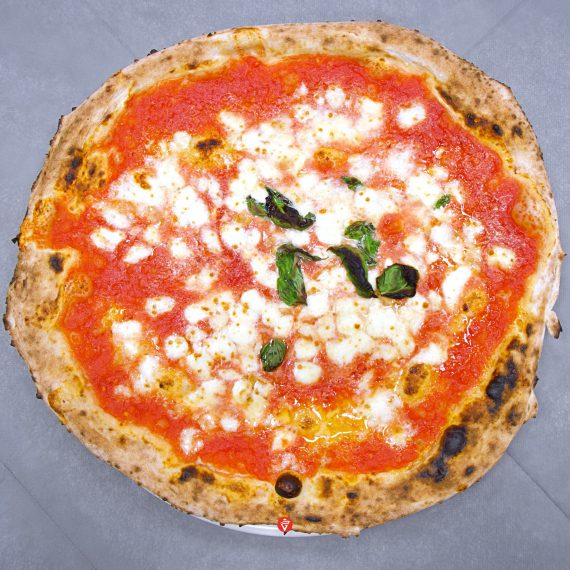Best Tomato for a Margherita Pizza? Guglielmo Vuolo has his say
San Marzano tomato is the king, but not always the best to use on every dough
Column by Antonio Fucito — 6 years ago

If the chapter about the best tomato for a Marinara pizza has taken away any doubts from you or teased your curiosity, we couldn’t help but doing another one about the best tomato for a Margherita Pizza.
The Margherita pizza is the most imitated in all its forms, and we can say without question that is the most beloved pizza in the world. Be that made with an authentic fiordilatte cheese from the Campania region, or a buffalo mozzarella, or with their imitations (like the often used American cheeses of the fake mozzarella cheese with a bad italian sounding name), the other side of the Margherita pizza is dominated by its tomato.
The dairy products, like the Agerola fiordilatte or the Buffalo mozzarella PDO, are a perfect match with the active principles of the tomato. After having discussed a lot about the best tomato for a Marinara pizza, it’s only natural asking about what’s the equivalent for a Margherita pizza.
Here we have again Master pizza chef Gugliemo Vuolo who invented, along with the journalist Monica Piscitelli, the Carta dei Pomodori (The tomato sheet), a sheet available in all the pizzerias owned by the pizzaiolo, which educates the customer on the thousands of varieties of tomatoes, giving a lot of freedom to their palate. Choosing a blend of tomatoes is always the bravest solution, but also the most practical one: in this way, letting yourself be guided by the expert hands of the pizza maker, you have the chance to taste different kinds of characteristics.
Even for the Margherita pizza there’s not a unique road to follow. Many deem the San Marzano tomato PDO the best to use: this fruit, grown on soils rich in water like the one in the area of Agro Sarnese Nocerino, comes out as rich in minerals, with an intense flavour. It is necessary to squash this tomatoes by hand, to avoid the oxidation caused by the air infiltrated with the use of mechanical tools (blenders or immersion blenders and similar). According to Guglielmo Vuolo the San Marzano is indeed a good tomato, but not really fit to every kind of Margherita. In fact, the amount of water inside might not act well against the highly hydrated doughs.
The Fiascone tomato is a variety whose cultivation has been reprised in the latest years, and this one has a good outcome on a Margherita. Also called Re Fiascone, is kind of a “recovered cultivation” in the territories of the amalfi Coast, and it’s sort of a grandfather of other varieties. Its peel makes it really suitable to work it and keep it in preserves.
Another great variety for a Margherita whose cultivation has been recently reprised is the Cannellino flegreo tomato, coming from the Campi Flegrei area and rediscovered thanks to a bunch of bold farmers. Today this variety has obtained the PAT label, which in Italian stands for Prodotti Agroalimentari Tradizionali, i.e. traditional farming products. The name “Cannellino” comes from the peculiarity of its cultivation which makes use of bamboo canes to hold the fruits, allowed in the area between Pozzuoli and Cuma. The reprise of this cultivation is slow and doesn’t make any use of industrial means: finding a good cannellino tomato means that the pizzaiolo is also a good finders of his food sources.The preserve of cannellino tomato is really a good fit for the Margherita pizza thanks to its juiciness, sweetness and strong salinity, which provide new shades of flavours to a Margherita pizza that could be unusual as well as very tasty.
With this “double feature” of our search for best tomatoes for Margherita and Marinara pizzas we have only scratched the surface of what nature offers us: in Italy there’s an estimated 300 varieties of tomatoes, which differ for shape, acidity grade and general salinity. Thanks to the reprisal of old cultivation, and to the effort of young farmers who come back to the land with modern technologies and traditional techniques, it’s easy to think we will have in the near future a strong attention focused on our red fruit, not only for the most popular varieties (some of them also mentioned in this article). We can foresee a wide opportunity to explore several tasty varieties, and new traditions to reprise.


